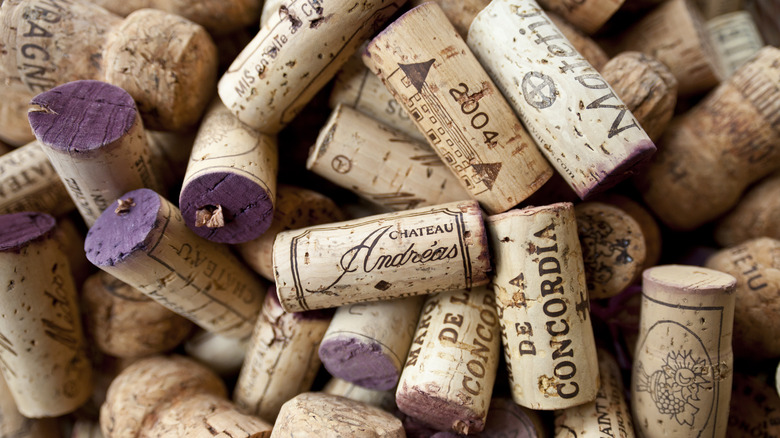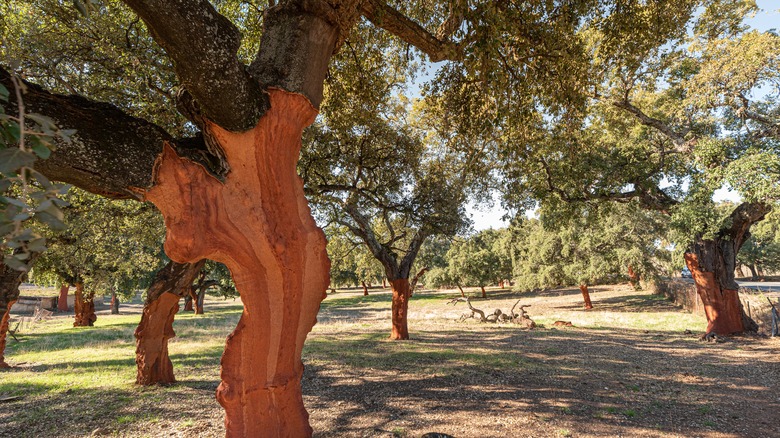Should You Ever Cook Pasta Sauce With A Wine Cork?
It's a sad, sad day when you discover that your glass of wine has bits of cork in it. Some might bypass the issue by investing in a reusable stopper made of silicone, glass, or some other non-porous material that won't go swimming in their vino. But in some parts of the world, you'd be chastised for throwing away a wine bottle's original cork — at least when you're about to make pasta sauce.
Some discovered the method for the first time recently from none other than Brooklyn Beckham, son of David and Victoria Beckham. When the neck-tatted former model posted an Instagram photo of himself cooking dinner, commenters had much more to say about the cork floating in his Bolognese sauce than they did about the DIY sweatshirt sling in which he cradled his new puppy, Lamb. "Only here for the comments pointing out the cork," wrote one user.
Evidently, throwing a cork in a pot of sauce is a time-honored tradition in parts of Italy and Portugal.
Corks might help yield tender meat
Food & Wine solicited the advice of professional chefs to get to the bottom of the cork-in-the-sauce method. In parts of Portugal of southern Italy, "old-school" chefs have been known to use wine corks for octopus dishes. Apparently, the natural enzymes in wine corks can help tenderize the sea creature's tough limbs by drawing out moisture. If you dip a cork in your wine, you'll see that it does want to soak up the liquid like a sponge. Indeed, the average cork contains 800 million air-pocket cells.
For those who've sworn off octopus after watching "My Octopus Teacher," the cork method might prove useful in other meaty recipes. (Brooklyn Beckham argues that it makes his Bolognese extra tender.)
"In Italy, we would find that the wine cork would loosen particles; therefore, we would use it when cooking harder or tougher meats to help tenderize them," Las Vegas chef Carla Pellegrino (who has both Italian and Portuguese heritage) told Food & Wine.
What is cork, anyway?
It's no wonder Portugal is known for cooking with corks. The country is fertile ground for cork oak trees, which have been legally protected since the 13th century. While they can be found peppered all over the world (including France, Algeria, Morocco, Tunisia, and parts of the United States), cork trees are particularly plentiful in the Mediterranean. In fact, Portugal and Spain produce more than 80% of the world's cork.
One of the oldest cork oaks in the world, dubbed the Whistler Tree, was planted in Águas de Moura in 1783, and it's still churning out bark for wine bottles. Like all cork trees, the Whistler (voted European Tree of the Year in 2018) is harvested for its unique, sponge-like bark every decade or so. In just one harvest, the tree might produce upwards of 100,000 corks.
According to the Rainforest Alliance, cork trees also come with a host of environmental benefits, including absorbing mass amounts of rainfall and preventing soil erosion.


